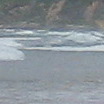The overall direction of my research is in the area of optimal design and control
of distributed parameter systems. This is a multidisciplinary area and I perform a
majority of my research at the Interdisciplinary Center for Applied Mathematics (ICAM).
My main area of study is in system level and computational aspects of these problems
covering research areas:
computational science/scientific computing, control theory, numerical analysis,
numerical methods for PDEs, optimization, reduced-order modeling,
sensitivity analysis, and verification and validation of software.
More details from some of these research areas are included below.
Sensitivity Analysis
My interest in sensitivity analysis goes back to my Masters research. The
current line of research was initially motivated by the role of sensitivity
analysis in computing derivatives for optimal design of a forebody simulator.
Research continues in both development of efficient algorithms for computing
sensitivity derivatives as well as their application to optimal design,
parameter estimation, reduced-order modeling and uncertainty quantification.
An overview of sensitivity analysis for partial differential equations is
provided here.
The general theme is that a mathematical viewpoint of the problem
can inform good numerical methods for sensitivity analysis.
Examples the illuminate the
utility of sensitivities are provided here.
Main Collaborators: Akhtar, Burns, Cliff, Gunzburger, Hay, Leite Nunes, Pelletier, Verma
Optimal Design and Parameter Estimation Algorithms
My primary interest is in optimization with partial differential
equation constraints (frequently models of fluid behavior). The
optimization parameters can be design
variables, shape variables, and PDE coefficients. Earlier work considered
the interplay between discretization and optimization, including
the impact of using a variety of discretization methods to compute derivatives
as well as other numerical noise. In recent work, I am more
focused on applications, and optimization problems with distributed
and/or random parameters.
- Convergence Theory Based on Asymptotic Consistency,
- Forebody Simulator Design Problem,
- Optimization Algorithms for Problems with Noisy Objective Functions,
- Optimal Zonation in Groundwater Modeling,
- Parameter Estimation of Random Material Coefficients,
- Trust-Region Optimization Algorithms
Main Collaborators: Burbey, Burns, Cliff, Herdman, Leite Nunes, van Wyk, Vugrin, Zietsman
Computational Methods for Control of PDEs
My main motivation is control of fluid flows, also known as flow
control. Applying linear quadratic regulator theory leads to large
scale Riccati equations (which can also be obtained by discretizing
the Riccati partial differential equations). In some cases, we are only
interested in the feedback gains (the kernel of the linear feedback
operator) which has applications to actuator and sensor placement.
While in other cases, we are interested in the influence of various
operator discretizations on the convergence of the Riccati solutions.
Applications include stabilization of flows, designing the configuration
of control systems (actuator and sensor placement), and state estimation.
- Approximation to PDE Riccati Equations,
- Chandrasekhar Equations,
- Data Assimilation,
- Optimal Actuator and Sensor Placement.
Main Collaborators: Akhtar, Burns, Demetriou, Iliescu, Stoyanov, Zietsman
Model Reduction Methods
Reduced-order models seek to capture the behavior of high-dimensional,
or infinite dimensional systems using low-dimensional systems. A
common approach uses projection of model equations onto a reduced
basis. For fluids, this typically is performed using the proper
orthogonal decomposition (POD, aka Karhunen-Loeve, principle component
analysis, singular value decomposition). My research involves
finding better bases (e.g. using sensitivity analysis to
extrapolate/interpolate
bases to different parameter values, using optimization to obtained
better long-time model behavior, using the principle interval
decomposition to find good time windows over which to apply the
POD). After projection, additional modeling is often required to
capture the influence of the neglected basis functions. In many
cases, this can be achieved using multiscale methods: artificial
dissipation, closure models, etc.
- Extension to Parameter Dependent Models
- Extension to Complex Turbulent Flows
- Applications to PDE Control Problems
- Applications to Optimal Design Problems
More on our group's research in model reduction methods for complex flows
can be found here.
Main Collaborators: Akhtar, Gugercin, Hay, Iliescu, Wang, Zietsman
Numerical Methods for PDEs
- Extension to Parameter Dependent Models
- Extension to Complex Turbulent Flows
- Applications to PDE Control Problems
- Applications to Optimal Design Problems
- ViTLES: Virginia Tech
Large Eddy Simulator
Main Collaborators: Iliescu, Pelletier, Roop
Applications
- Model of Nitrogen Transport
- Modeling Thermal Energy in Buildings
- Optimal Sensor/Actuator Placement in Building HVAC Design.
- Parameter Estimation in Groundwater Flow Models
Main Collaborators: Ahuja, Burbey, Burns, Cliff, Nunes, Shah, Surana, Wolfe, Zietsman
Funded Research
I am very grateful to have received support for this research from the Air
Force Office of Scientific Research (AFOSR), the National Research Council (NRC),
and the National Science Foundation (NSF):
- Control and Optimization Tools for Systems Governed by
Nonlinear Partial Differential Equations, AFOSR, 2000-2005.
- Computational Methods for Design, Control and Optimization
of Micro Air Vehicles, AFOSR, 2003-2006. (with J. Burns,
E. Cliff and T. Iliescu)
- Summer Faculty Fellowship Program, NRC, 2003.
- Scientific Computing Research Environments in Mathematical
Sciences, NSF, 2003-2005. (with T. Iliescu)
- Computation and Analysis of Reduced-Order Models for
Distributed Parameter Systems, NSF, 2005-2008. (with
C. Beattie, S. Gugercin and T. Iliescu)
- High Performance Parallel Algorithms for Improved
Reduced-Order Modeling, AFOSR, 2005-2008. (with C. Beattie,
S. Gugercin and T. Iliescu)
- Summer Faculty Fellowship Program, NRC, 2007.
- Reduced-Order Modeling for Optimization and Control of
Complex Flows, AFOSR, 2007-2010. (with T. Iliescu)
- Improved Parametrization of Groundwater Flow Models Using
Interferograms and Adjoint Sensitivity Analysis, NSF,
2010-2012. (with T. Burbey and S.L. Sharpe)
- Advanced Computer Design Tools for Modeling, Design,
Control, Optimization and Sensitivity Analysis of Integrated
Whole Building Systems, DOE HUB, 2010-2015. (with J. Burns,
E. Cliff, S. Gugergin, T. Herdman, T. Iliescu, M. Marathe and
L. Zietsman at VT, see GPIC HUB)
- Transcending POD: Model Reduction for Complex Fluid Flows,
NSF, 2010-2013. (with T. Iliescu and J.P. Roop)
I was fortunate to spend extended research stays at the
Air Vehicles Directorate at AFRL, the Department of Scientific
Computing at Florida State University, and Genie Mecanique at
Ecole Polytechnique de Montreal in recent years.





